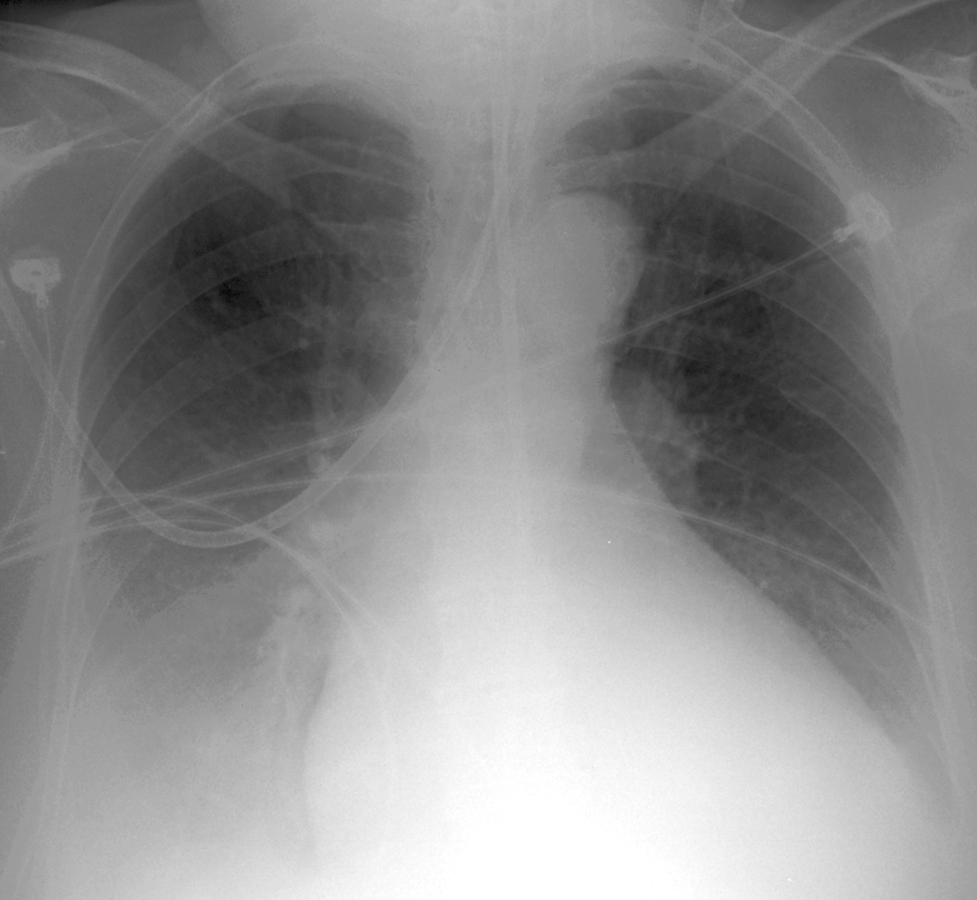ICU Chest Films > Fluid in the Chest > Congestive Heart Failure > Radiographic Signs
Radiographic Signs of Congestive Heart Failure
![]()
As the left ventricle fails and begins to distend an enlarged cardiac silhouette is seen on x-ray, especially in patients with chronic CHF. This sign, though, is not specific; a pericardial effusion will also enlarge the cardiac silhouette. Also, AP films magnify the cardiac shadow making it difficult to determine actual cardiac enlargment. As pulmonary venous pressures rise pulmonary vessels are recruited in an attempt to normalize pressures. This phenomonan can be seen on chest x-ray as increased pulmonary vascularity with redistrubution to the apex. This signs is also compromised by the typical ICU portable film. Supine position of the patient will cause redistribution of pulmonary flow even in the abscence of CHF. The azygos vein may enlarge as a result of increased pressures transmitted to the venous system. This signs also depends on patient position. The more reliable signs of CHF in the ICU patient are alveolar or intersitial edema. Pleural effusions often accompany subacute or chronic cardiogenic pulmonary edema.

Enlargement of the cardiac silhouette, increased pulmonary vasculature,
and pleural effusions are
evident in the patient suffering from congestive heart failure.